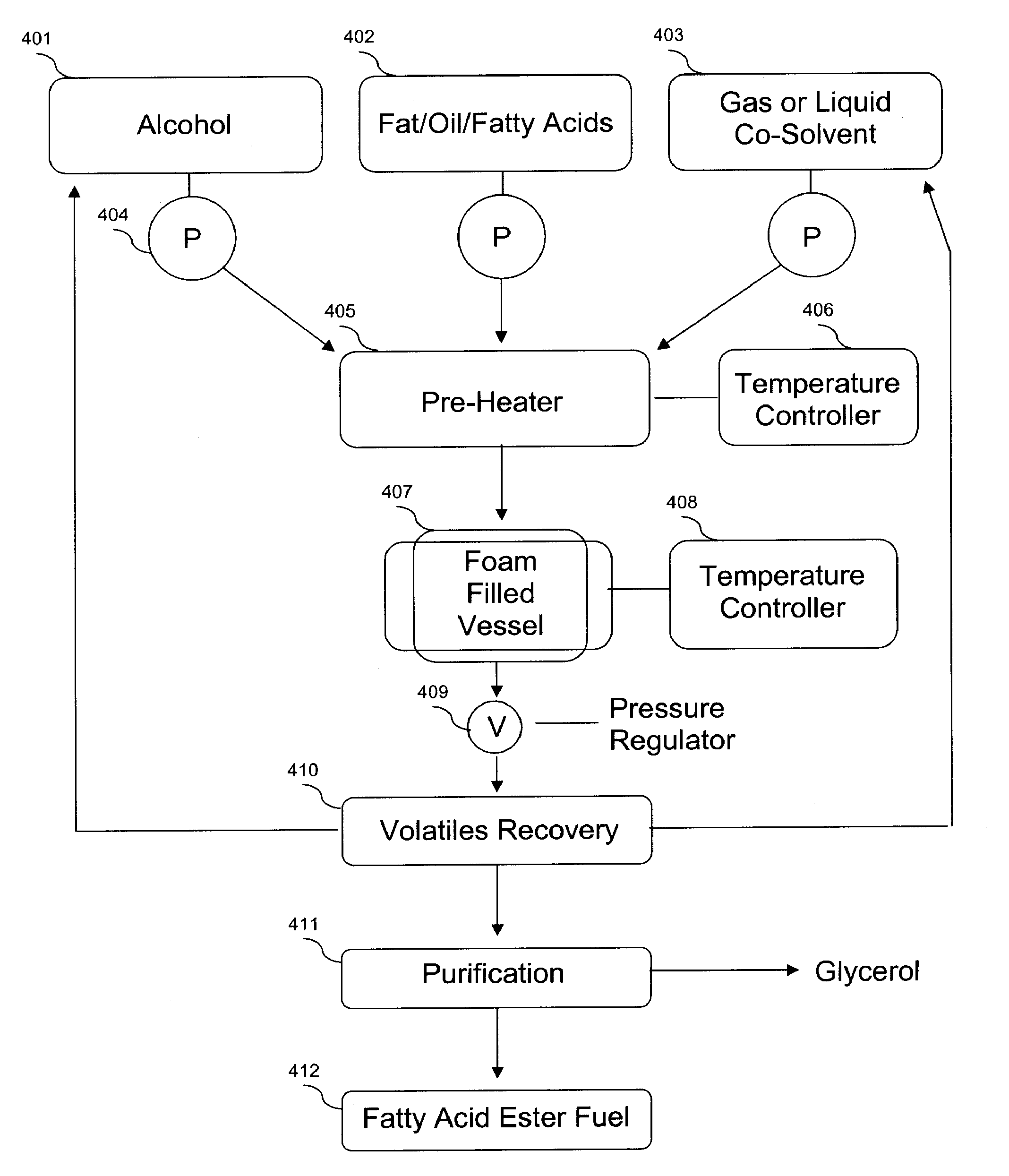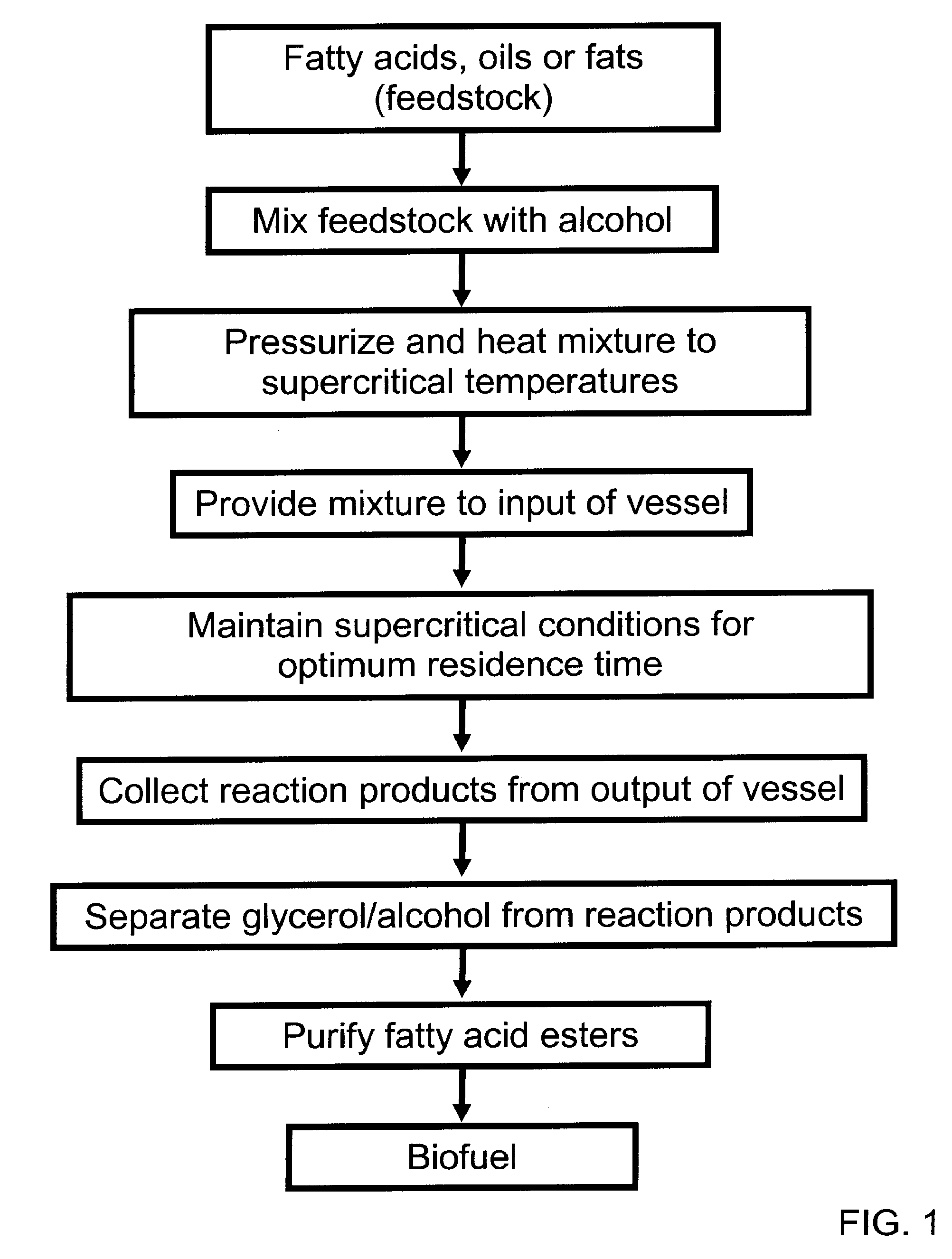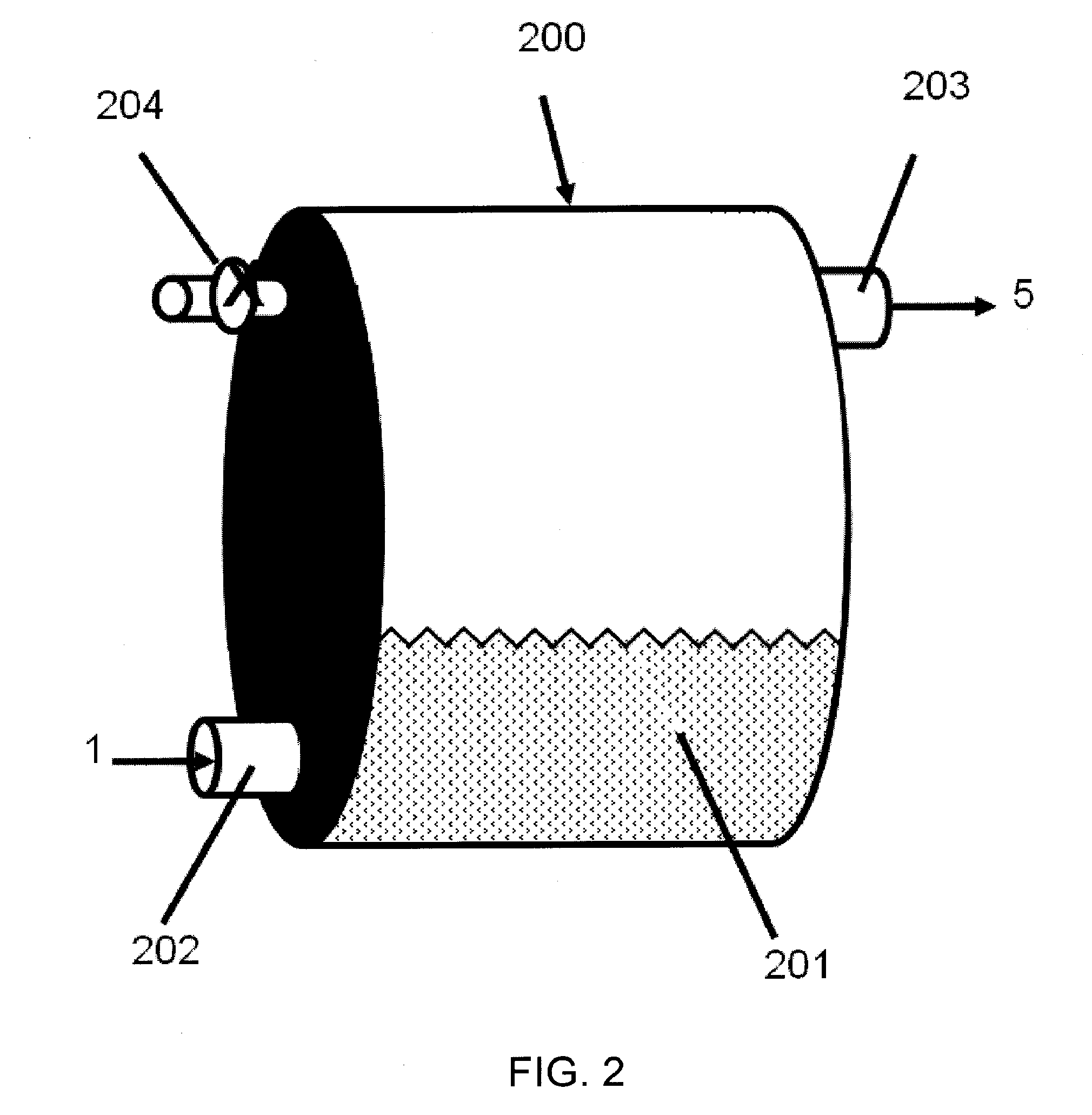Vessels and methods for synthesis of biofuel
a biofuel and biofuel technology, applied in the direction of indirect heat exchangers, fatty acid chemical modification, lighting and heating apparatus, etc., can solve the problems of reduced concomitant yield, reduced reaction efficiency, and localized variations in the ratio of reactants within the vessel
- Summary
- Abstract
- Description
- Claims
- Application Information
AI Technical Summary
Benefits of technology
Problems solved by technology
Method used
Image
Examples
example 1
[0062]As an exemplary demonstration, a steel cylinder (2 cm inside diameter, 40 cm length, and 1 cm wall thickness) was used as a reaction vessel. The vessel was maintained at 310 degrees Celsius while a stream consisting of a 1:1 volume ratio of methanol and rapeseed oil was pumped through the cylinder. The flow rate was adjusted in order for the material to remain in the cylinder for a period of 8 minutes before exiting through a back-pressure regulator valve. This valve was adjusted to maintain a system pressure of about 17.65 mPa.
[0063]A sample of the product exiting the cylinder was silated using a 9:3:1 solution of pyridine:hexamethyldisilazane:timethylchlorosilane (30 minutes, 75° C.) then was analyzed on a HP 1 silicone column in a 6890 HP Agilent GCMS chromatograph system. Results indicated that less than 70% of the oil had undergone the desired transesterification reaction to become fatty acid methyl esters.
[0064]The reaction was repeated, but in this case the cylinder was...
example 2
Example 2: Effects of Porous Structure on Esterification Conversion Rate in a Vessel
[0067]This experiment was conducted to demonstrate the difference in conversion rates for transesterification reactions occurring in a reactor vessel having a low length to diameter ratio, with and without inclusion of a porous structure.
[0068]The starting materials used for the reaction mixture was virgin canola oil as the lipid feedstock (free fatty acid content of 0.13%, as oleic acid, determined by NaOH titration) and anhydrous ethanol was employed as the alcohol reactant. No co-solvents were used.
[0069]The reaction vessel consisted of a 316 Stainless steel cylinder, 30 cm in length, with an inside diameter of 1.9 cm. The alcohol and oil were pumped via separate channels of an Eldex high pressure HPLC pump through sections of 3 mm stainless steel tubing through a condensing fluid heat exchanger, then brought into contact through a piping “tee” before entering the cylindrical reactor. The reactor ...
PUM
 Login to View More
Login to View More Abstract
Description
Claims
Application Information
 Login to View More
Login to View More - R&D
- Intellectual Property
- Life Sciences
- Materials
- Tech Scout
- Unparalleled Data Quality
- Higher Quality Content
- 60% Fewer Hallucinations
Browse by: Latest US Patents, China's latest patents, Technical Efficacy Thesaurus, Application Domain, Technology Topic, Popular Technical Reports.
© 2025 PatSnap. All rights reserved.Legal|Privacy policy|Modern Slavery Act Transparency Statement|Sitemap|About US| Contact US: help@patsnap.com



